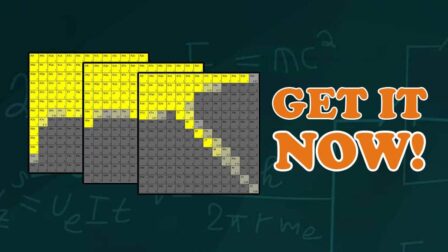Poker Solvers Explained – Why You Need To Think Like A Poker Solver?
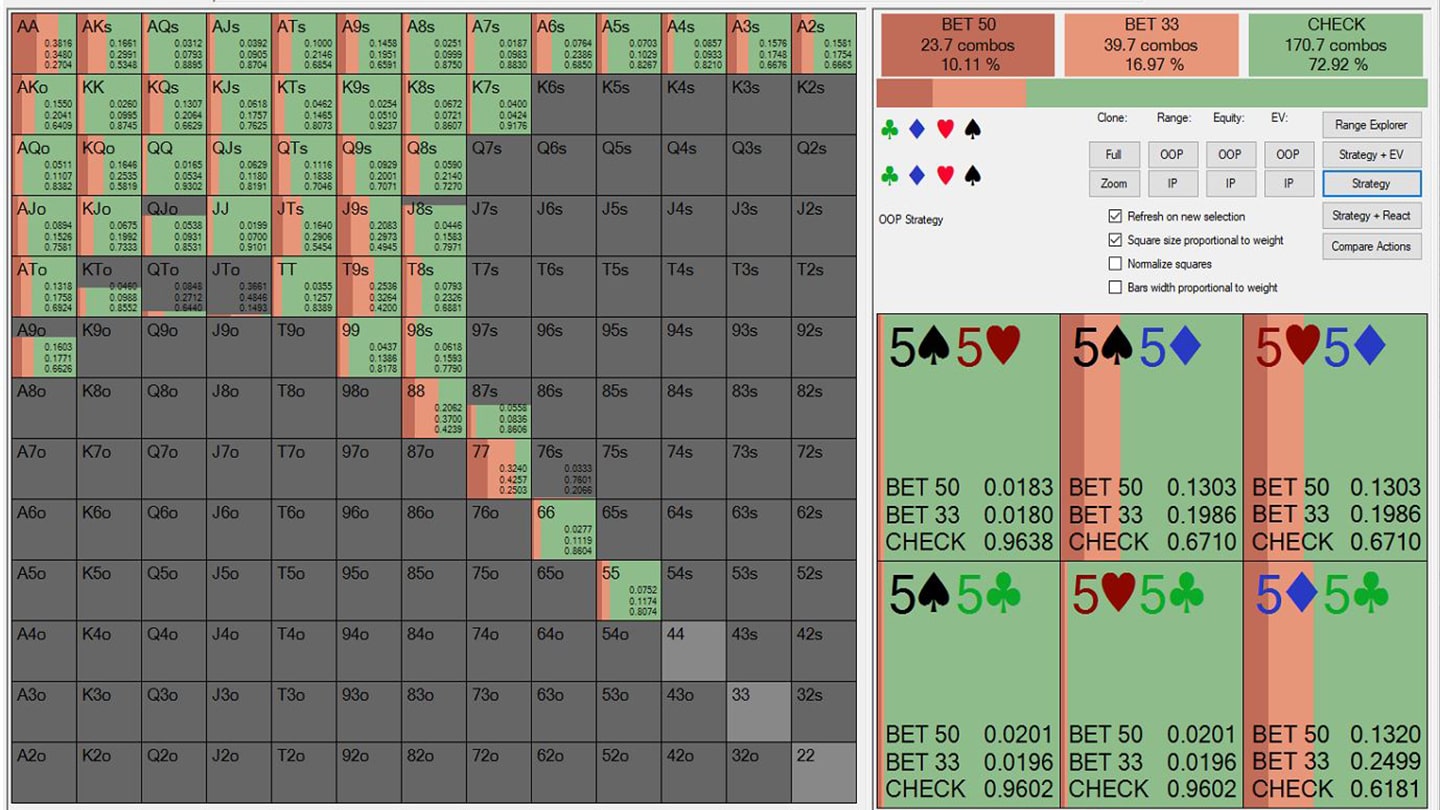
9 minutes
Last Updated: January 2, 2024
Poker was once a game played mostly off of feelings and hunches, but it has evolved into so much more than that.
With each passing year, the way we understand and look at poker changes quite a bit, and that understanding has changed drastically over the last decade.
The introduction of poker solvers had a lot to do with that, as these powerful tools taught us to look at real money poker through a whole new lens.
A whole generation of young poker players has learned how to play the game thanks to poker solvers.
Whether you love them or hate them, solvers are here to stay.
But what is a poker solver exactly, and how does it work? Keep reading to find out exactly what poker solvers are, how they operate, and how you can use them to improve your own game.
I am also going to discuss some limitations and deficiencies that using a poker solver may present you with, but let’s start with the more basic things.
What Is a Poker Solver?
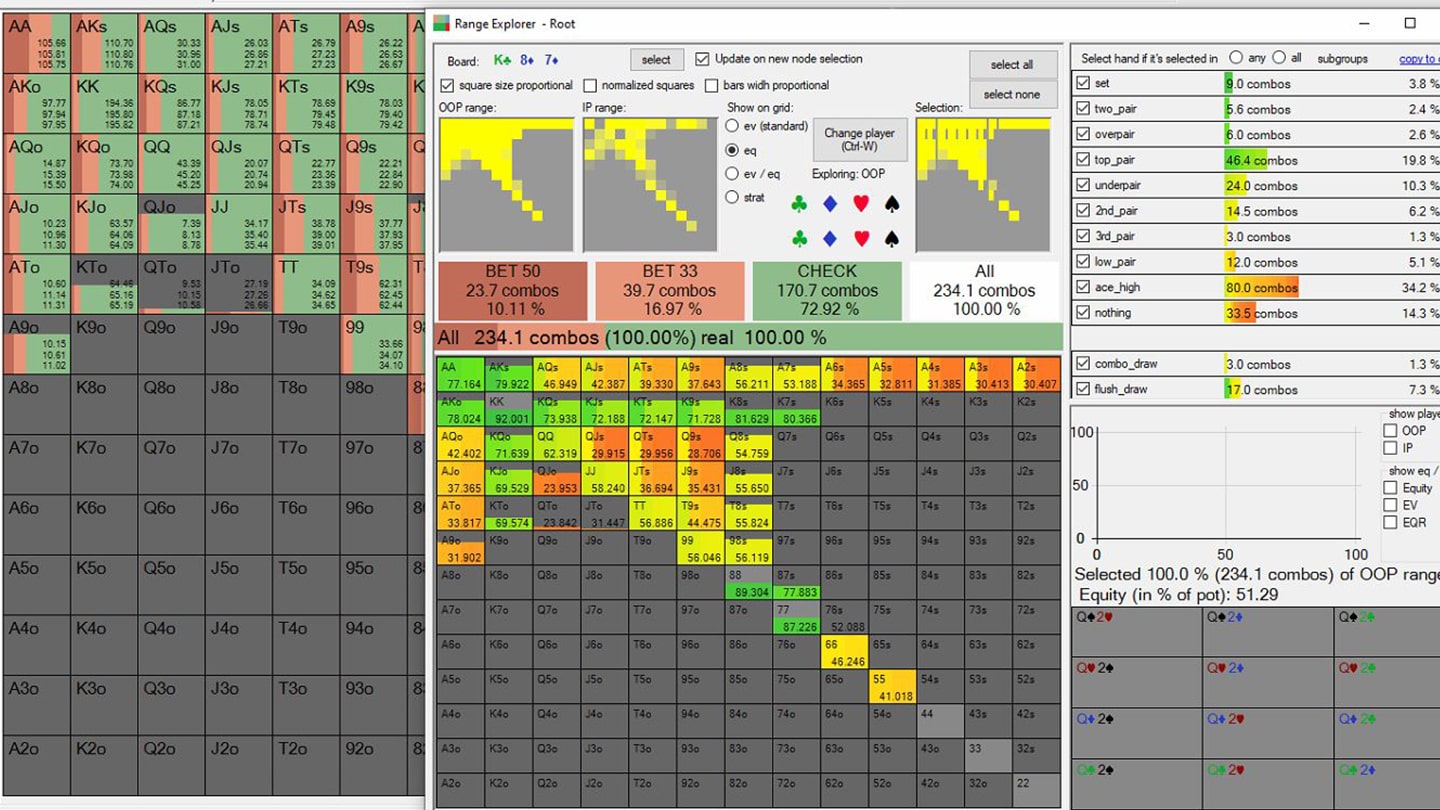
Poker solvers are pieces of software that can be used to process poker hands and produce hand “solutions” based on preset “inputs.”
If you think you are going to go into a poker solver and simply get the answer as to how you should have played a certain hand, you are mistaken.
Instead, poker solvers like PioSolver or Simple Postflop will only give you the answers to the questions you ask them by entering inputs of your own choice.
Of course, these programs are designed to help poker players find the best plays in various spots, but they are a lot more complicated than you might imagine.
Yet, on the most basic level, a poker solver is a piece of poker software that provides you with optimal solutions for various spots in the game, which may be exactly what you are looking for.
How Do Poker Solvers Work?
I briefly mentioned earlier that a poker solver would only give you the answers to the questions you ask. So, let's talk about how you can ask the solver some questions and what types of answers you can expect.
The answers a poker solver produces are called solutions. They are derived from the computer processing all the inputs you provide it.
The various inputs you can enter into a poker solver include information such as:
- Your preflop hand range
- Your opponents’ hand ranges
- The effective stack size
- Pot size
- Possible bet and raise sizes
These are some of the basic inputs any poker solver will ask you to provide to give you any solutions at all.
Some of these inputs are easy to provide, such as the pot size and the effective stack size. Others, such as your opponent's preflop hand range, are somewhat of guesswork.
Furthermore, the solver will ask you to provide it with the possible bet and raise sizes. You should only enter a few sizes, usually three, and the solver will tell you which size to use at which frequency.

However, this does mean that the solutions you get will always be incomplete. There is an infinite number of possible bet and raise sizes, and it would take an infinite amount of time for the solver to process them all.
Yet, by providing the program with some reasonable bet and raise sizes to work with, you will get solutions that work well in a real game and against real opponents at the tables.
What Is GTO Poker?
Whenever we talk about poker solvers, it is inevitable to also mention the concept of game theory optimal (GTO) poker, which solvers strive to solve.
GTO poker is the opposite of exploitative poker, with the strategy looking to protect the player against getting exploited instead of looking to exploit the tendencies of others.
If played perfectly, the GTO poker strategy would make it impossible for anyone to beat you, regardless of the way they played their hand.
However, GTO strategy also doesn’t look to capitalize on the mistakes of others.
Many old-school poker players often ask why poker solvers don't take into account their opponent's stats or tendencies. The answer is that solvers don't care about exploits or tendencies at all.
The solver looks to create a solution that will work against everyone in the world, regardless of how they play and how often they bluff, value bet, call, or fold.
Yet, there are limitations to this as well. Since poker solvers only provide solutions for the given inputs, the solutions can often be mistaken. Your opponent’s range could be wildly different than what you assumed it to be, and their betting options could be quite obscure at times.
Yet, in most cases, especially in heads-up situations, the GTO poker solutions given by poker solvers will be a great baseline to play from and will be extremely hard to play against.
Learning Poker with Solvers
The most basic way to improve your play with poker solvers is by looking over various solutions and trying to memorize them by heart.
However, most people don't have an eidetic memory and will not be able to memorize the thousands of possible outputs. This is why another approach works a lot better.
Instead of trying to memorize exactly what the solver is doing, you can try to understand why it is doing the things it is doing.
For example, when you see the solver use a certain hand as a bluff that you would not normally bluff with, you should try asking yourself why this hand is featured so prominently in the solver’s bluffing hand range.
When you start thinking about these things, you will start to notice patterns. You will see the solver using hands with backdoor equity and blockers to bluff with or certain hands that unblock the opponent's bluffs as candidates for the check/call option on the river.
In either case, exploring poker solver solutions with an open mind will change your understanding of poker from the ground up. It will open you to new possibilities and ideas that you never considered before.

When you look at modern-day poker players like Michael Adamo or Justin Bonomo play poker, you will notice many of these unusual plays and maybe scratch your head at first.
Things start to make sense when you realize they are deriving their play from their understanding of solver logic.
The truth is that the computer often “thinks” about poker in different ways than humans do. This is why even seasoned solver pros like Doug Polk still say they are often surprised by some of the solutions these programs end up producing.
Advantages of Poker Solvers and GTO Poker
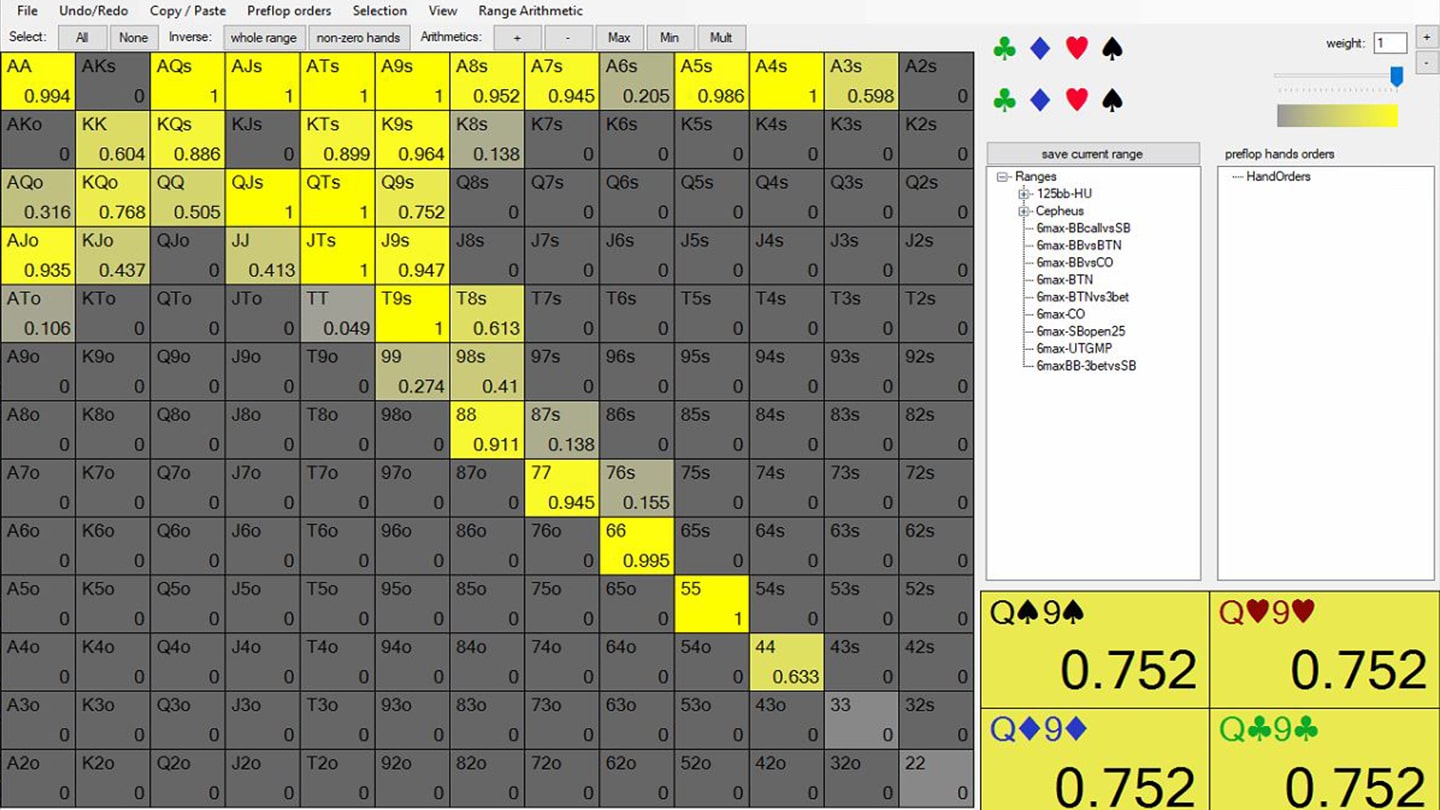
GTO poker strategy and the poker solvers that are used to study it are ideal solutions for poker players looking to play against very tough opponents.
While GTO poker does work against anyone, it works especially well against strong, thinking players who play the game at a very high level.
This is because you need a lot of protection and balance to play against these players, or you will get demolished at the tables.
If you play against tough pros, you will need to have your ranges balanced and to bluff and value bet with frequencies that only a poker solver can calculate to perfection.
What’s more, pro players will usually stick to meaningful bet sizing. This means you can actually work with poker solvers and find the best solutions to plays you will often encounter.
GTO poker strategy won’t tell you how to exploit such players, but the truth is that it is very hard to exploit them anyways. Their game tends to be very balanced and strong, making big exploits hard to find.
Advantages of Exploitative Poker
On the other hand, when playing against weaker and recreational poker players, exploitative play will be the better way to go, without a doubt.
By moving away from GTO solutions and playing an exploitative style, you will give yourself a chance to dominate such opponents and punish them for their mistakes.
The exploitative play assumes that you are playing at a much higher level than your opponents and that you will not get exploited in return by opponents playing back at you and punishing you for your own overplays.
When playing against passive fish or maniacs at the poker tables, playing a very exploitative style can mean playing too many or too few hands and betting for value or as a bluff way more often than the solvers would recommend.
However, you should note that playing a strong exploitative game can be even more difficult than playing a strong GTO poker style.
You will have to rely on a lot of incomplete information and “guesses.”
For instance, a player playing an exploitative style may want to call a big river bet from a maniac holding nothing but Ace-high. This is a decision that’s based entirely on the assumption of the maniac’s tendencies.
Stepping this far away from GTO can be either brilliant or complete madness. I would recommend trying not to go too far with such plays as it can quickly turn you into the fish at the table.
Should I Be Using Poker GTO Solvers?
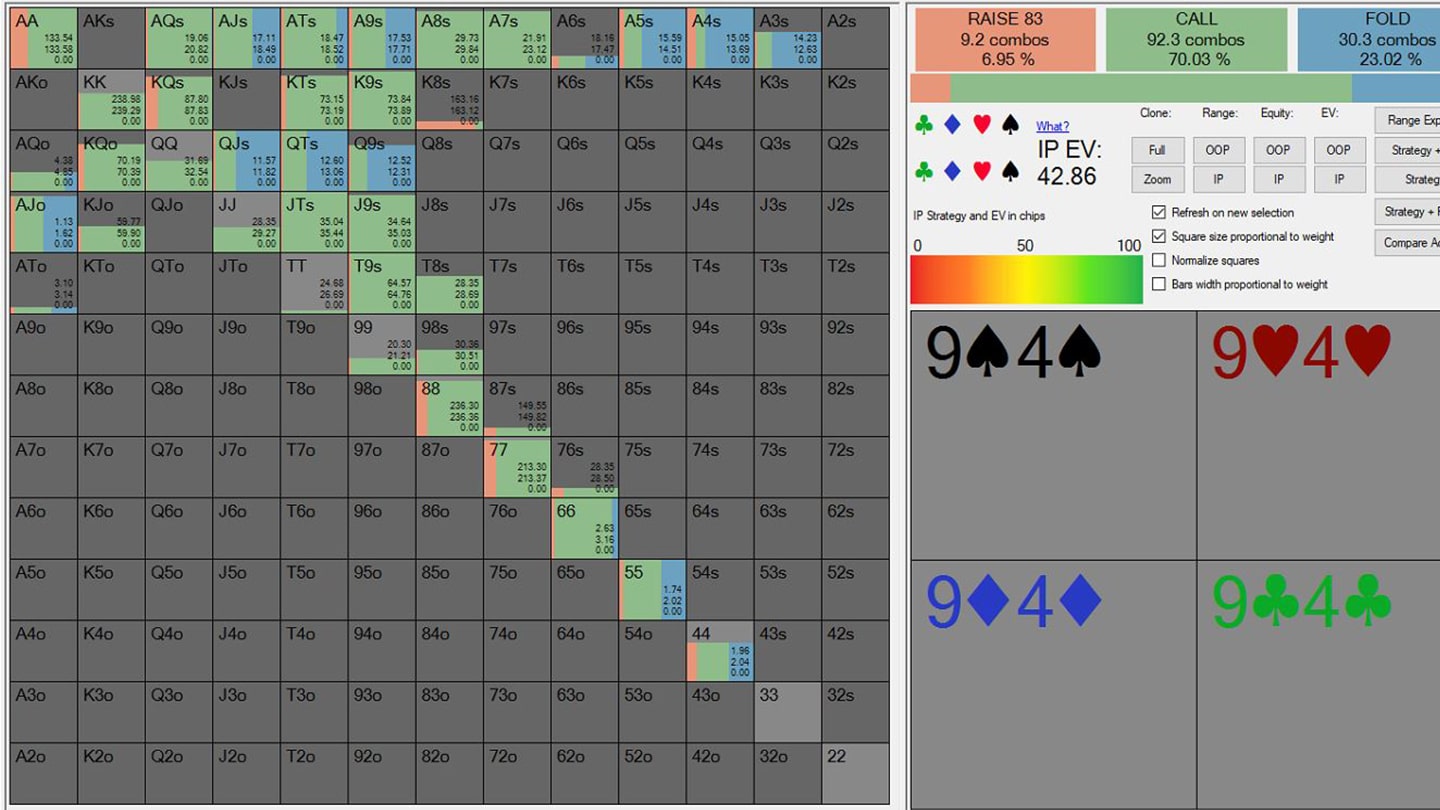
Whether you are a complete poker novice or an experienced poker player of many years, you should probably start working with poker solvers in this day and age.
This does not necessarily mean I recommend adjusting your play completely to the GTO trends or trying to play like a solver.
Instead, working with solvers and learning about how they come up with their solutions is one of the best ways to learn more about poker at levels that human beings find hard to reach.
Furthermore, understanding solver solutions will allow you to play well when you end up facing balanced players who do play a GTO style of poker, which is more and more common these days.
Finally, knowing the GTO poker baselines will be a great way to create an exploitative poker strategy as well. You will know what the optimal play is, which is a great way to try and figure out how to move away from it as an exploit.
Whatever poker games you are playing and whichever style of play you are aiming to learn, playing around with poker solvers for at least some hours will give you a new perspective on the game, which anyone will benefit from.
Getting Started with Poker Solvers
Getting started with poker solvers is relatively simple, although it may take some time before you actually have a good grasp on how to use them.
The first step will be to choose which poker solver to try out. Some of the best options out there include GTO+, PioSolver, and Simple GTO Trainer, and each of them can be a great tool to get started with.
If you plan on using coaching videos in combination with your solver, which I do recommend, choosing PioSolver is probably your best bet. This is the poker solver used by most coaches these days.
Once you have your solver set up, you can start coming up with some hands and seeing what the solver returns as solutions, but I do recommend getting some help at first.
Working with a friend who is experienced with poker solvers or a poker coach early on will be helpful, even if it’s simply by watching a video explaining how to enter your inputs correctly and how to interpret the outputs.
After a little while, you should understand how your poker solver works. You will then be able to work with it yourself and spend hours in the lab getting ready for actual in-game situations to come.


















